Stretch with Data
Match graph values and explore margins of error qualitatively.
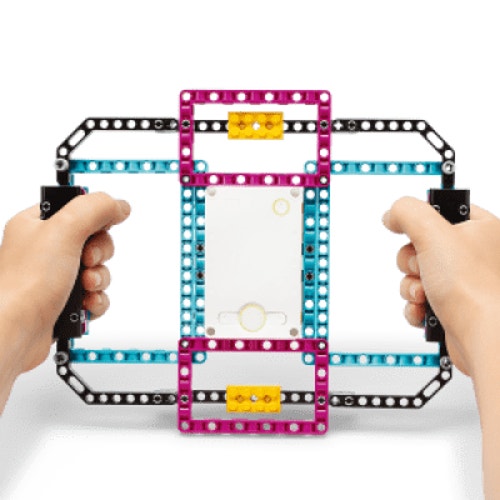
Engage
(Before Class, 20 Min.)
In this lesson, your pupils will stream pitch, roll and yaw data values to trace a line graph in real time. They'll use this graph to coordinate their movements, matching their streamed data to a pre-recorded graph.
The pitch, roll and yaw data values describe the tilt angle of an object in relation to its 3 axes:
- Pitch - tilt on the y-axis
- Roll - tilt on the z-axis
- Yaw - tilt on the x-axis
Use various materials to engage your pupils on the topic of pitch, roll, and yaw data values.
Ignite a Discussion
Start a discussion by asking questions related to the lesson. Here are a couple of suggestions:
- What are some ways of determining whether a movement is precise or not?
- How might you graph values to represent real-life movement?
Have your pupils write down their thoughts as a hypothesis.
Explore
(During the Lesson, 30 Min.)
- Have your pupils build a yoga ring. They can create their own models or follow the building instructions in the app to build the Yoga Ring model.
- Explain that this device will record the pitch-roll-yaw angle values of various movements.
- Ask your pupils to try out their models using the program that’s been suggested in the SPIKE App. For the first movement, they'll bring the ring from a forward-facing position, with the Light Matrix facing their eyes, to the top of their head (please watch the video for reference).
- Tell them to look at the pitch angle on the graph over time and document what they see.
Explain
(During the Lesson, 15 Min.)
- Allow your pupils some time to adjust their programs to track other values.
- Have them try to match the second graph, which has been preloaded in the line graph, with their movements.
- Make sure they realise that the speed of movement will affect the ‘shape’ of the graph.
Elaborate
(After the Lesson, 20 Min.)
- If your pupils still have access to their SPIKE Prime Sets, have them complete the tasks given in the SPIKE App. This will help them to elaborate on their learning with a bit of hands-on activity. Here are some examples:
- The last preloaded graph uses two values at the same time. Your pupils have to combine both moves into one long stretching session.
- If your pupils don't have access to their sets, have them complete their Inventor Notebooks, or assign one of the extension activities that’s been suggested below. Most of the extension activities can be done using the data that was collected during the hands-on session
- Facilitate a sharing session in which your pupils discuss their thoughts and the results of their experiments. This can be done using whichever method/tool is the most efficient (i.e. in-person or online).
Evaluate
- Give feedback on each pupil's performance.
- To simplify the process, you can use the assessment rubrics that have been provided.
Assessment Opportunities
Teacher Observation Checklist
Establish a scale that suits your needs, for example:
Partially accomplished
Fully accomplished
Overachieved
Use the following success criteria to evaluate your pupils' progress:
- The pupils are able to program a device that logs data on a line graph.
- The pupils are able to correlate the movement of a physical device to the line graph it's generating.
- The pupils can explain the concepts of pitch, roll, and yaw.
Self-Assessment
Have each pupil choose the brick that they feel best represents their performance.
- Blue: I’m able to graph data using the program that’s been provided in the app.
- Yellow: I’m able to create my own experiment using a line graph.
- Violet: I’m able to create my own experiment, use a line graph and draw conclusions from the graph.
Peer Feedback
Encourage your pupils to provide feedback to one another by:
Having one pupil use the coloured brick scale above to score another pupil’s performance.
Asking them to present constructive feedback to one another so that they can improve their group’s performance during the next lesson. This is an excellent opportunity to use videoconferencing tools or blog posting tools in a blended learning scenario.

Differentiation
Simplify this lesson by:
- Asking your pupils to recreate the experiment using only the Hub, by holding the Hub in the correct position to do this lesson
- Making sure that your pupils have adjusted the program that’s been suggested in the SPIKE App to match the configuration of their models
Take this lesson to the next level by:
- Asking your pupils to build their own yoga rings
- Having your pupils record a partner's yoga movements on a graph, share their graphs and then try to replicate each other's movements by following the graph data
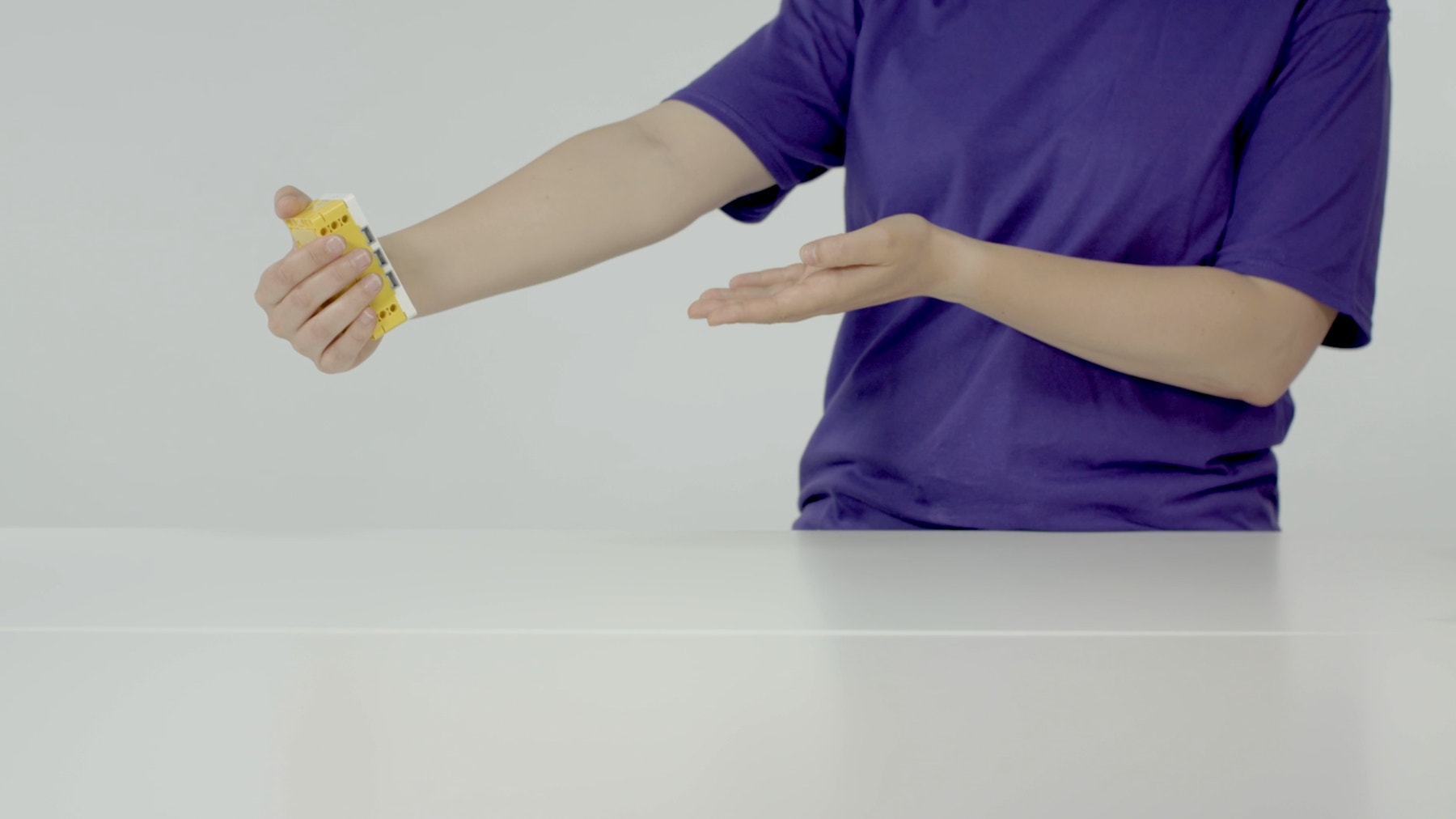
Tips
Building Tips

Coding Tips
This lesson is designed to be played while the hub is connected through USB or Bluetooth. While connected, the data collected by the Hub is streamed directly to your device, and traced in real-time on the Line Graph.
Main Program

Solution Program

Science Data Tips
Here’s an example of the data your pupils can expect from this experiment.
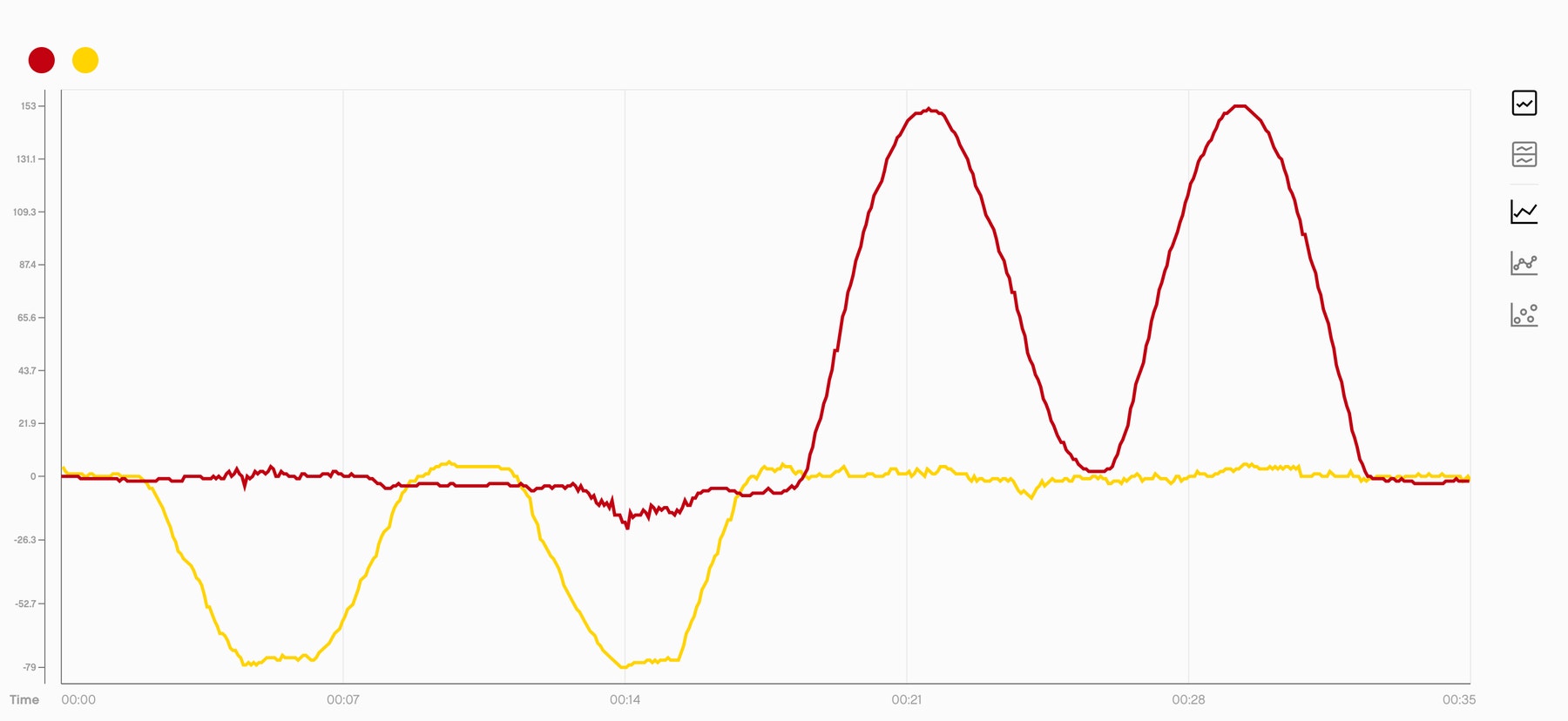
Extensions
Maths Extension
To incorporate the development of maths skills:
- Using the sample data that’s available for this lesson (or your own data), have your pupils describe what's happening with regard to movement when the graph shows a straight line and when it shows a curve.
- Have your pupils find the maths expression under the form y = mx + b for a line portion of the graph, in the sample data or in the data that they’ve collected.
- Have your pupils find these first degree equations (y=mx+b) both manually and using a digital tool.
Note: This will require additional time.
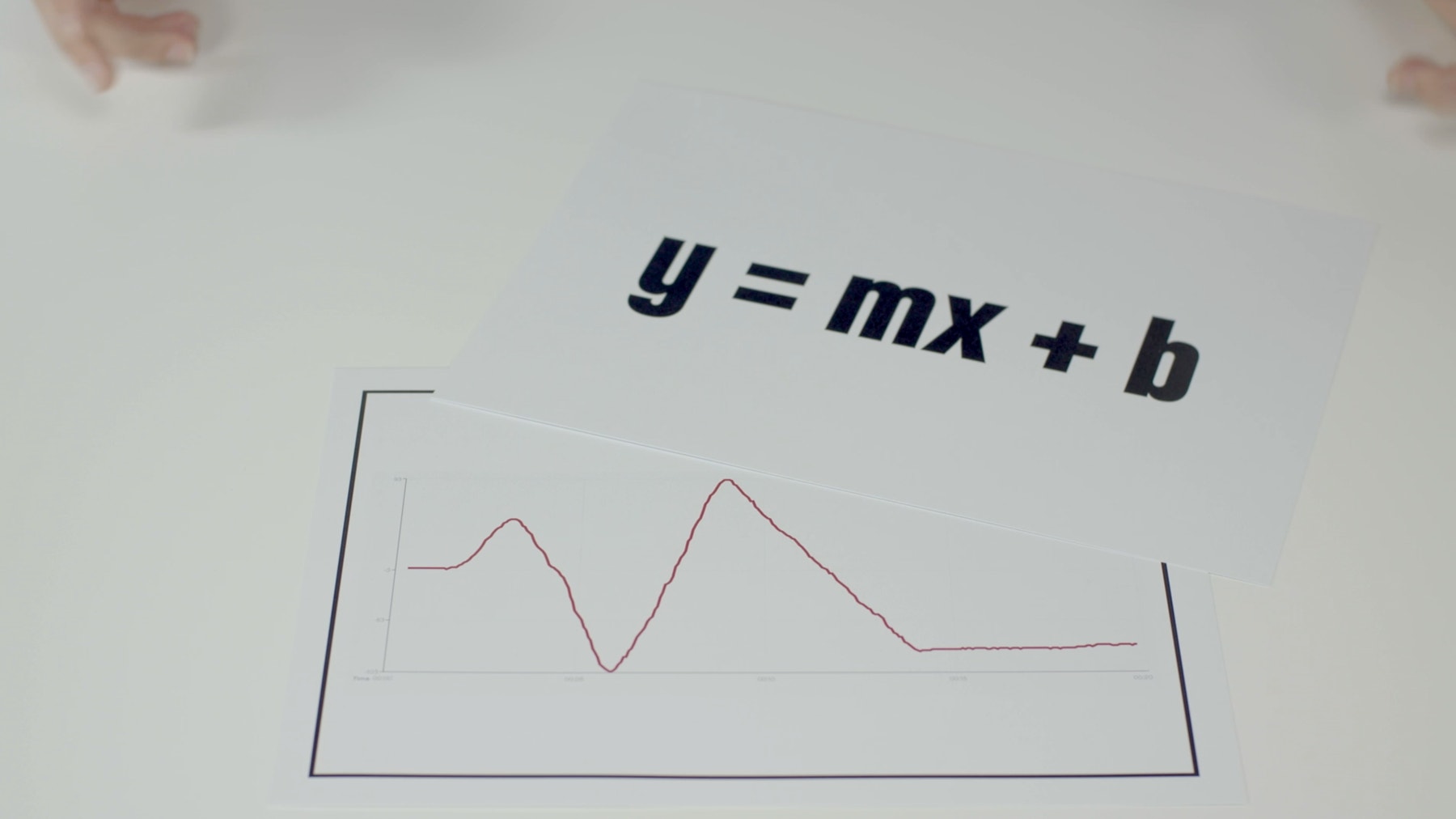
Literacy Extension
To incorporate the development of literacy skills:
- Have your pupils use digital media to explain this lesson and their findings. This could be done by:
- Producing a video
- Posting pictures and comments via a learning management system (if it’s available)
- Contacting a yoga instructor to research whether a device like the Yoga Ring model could be useful in their practice
Note: This will require additional time.
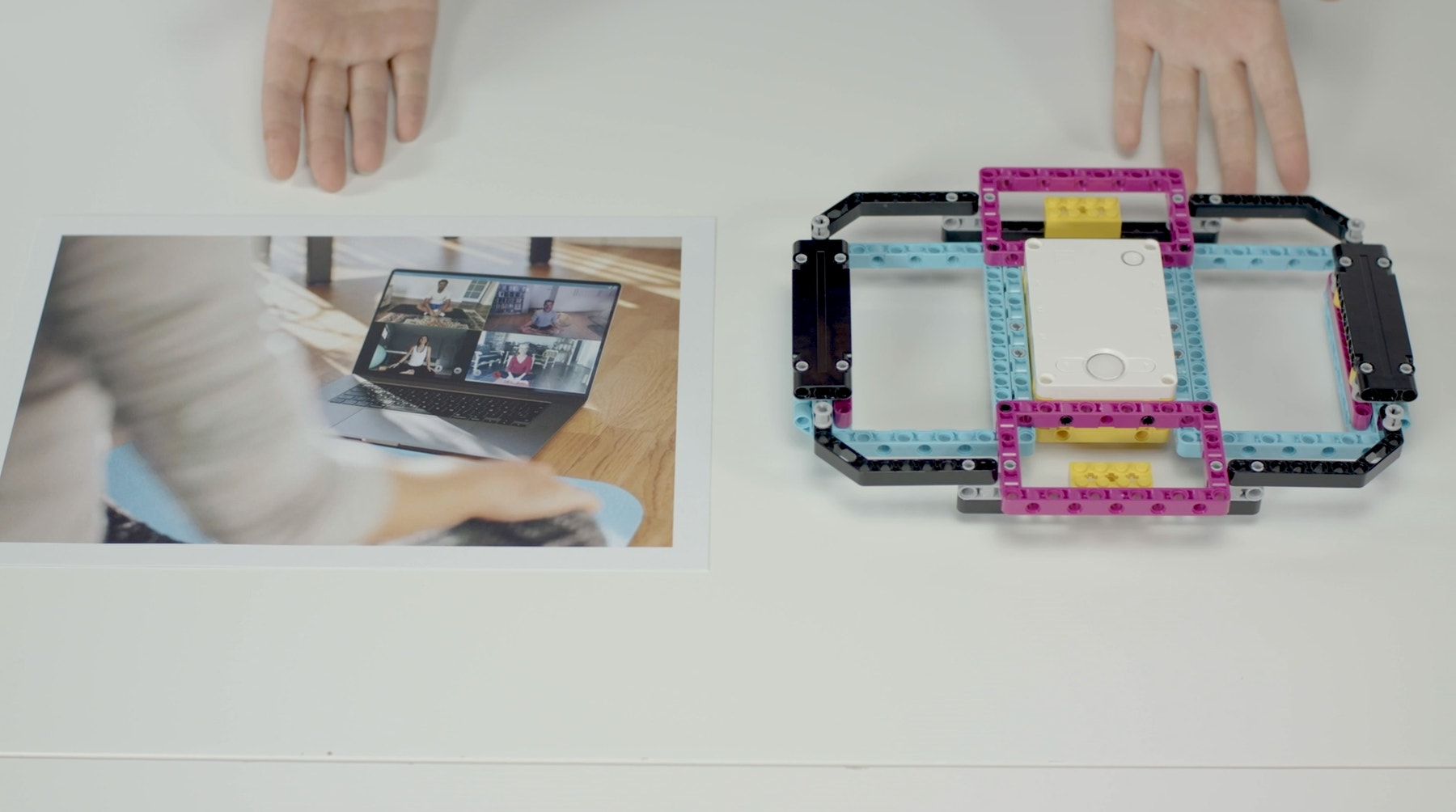
Career Links
The pupils who enjoyed this lesson might be interested in exploring these career pathways:
- Therapeutic Services
- Engineering & Technology
Teacher Support
Pupils will:
• Create a program that will introduce them to the LEGO® Education SPIKE™ Prime line graphing tool
• Graph real sensor data
• Correlate graph curves with real-life movement
• LEGO Education SPIKE Prime Set
• Device with the LEGO Education SPIKE App installed
DFE Science Programmes of Study KS3
Experimental skills and investigations - 3
• select, plan and carry out the most appropriate types of scientific enquiries to test predictions, including identifying independent, dependent and control variables, where appropriate
Experimental skills and investigations - 5
• make and record observations and measurements using a range of methods for different investigations; and evaluate the reliability of methods and suggest possible improvements
DFE Maths Programmes of Study KS3
Reason mathematically - 1
• extend and formalise their knowledge of ratio and proportion in working with measures and geometry, and in formulating proportional relations algebraically
Ratio, proportion and rates of change - 7
• relate the language of ratios and the associated calculations to the arithmetic of fractions and to linear functions
DFE English Programmes of Study KS3
Writing - 1
Pupils should be taught to:
• write accurately, fluently, effectively and at length for pleasure and information through: notes and polished scripts for talks and presentations
Aims - 7
• are competent in the arts of speaking and listening, making formal presentations, demonstrating to others and participating in debate.
Spoken English - 2
• giving short speeches and presentations, expressing their own ideas and keeping to the point
DFE Computing Programmes of Study KS3
Subject content - 1
• design, use and evaluate computational abstractions that model the state and behaviour of real-world problems and physical systems
Subject content - 3
•
use two or more programming languages, at least one of which is textual, to solve a variety of computational problems; make appropriate use of data structures [for example, lists, tables or arrays];
Subject content - 8
• create, re-use, revise and re-purpose digital artefacts for a given audience, with attention to trustworthiness, design and usability
DFE Design & Tecnology Programmes of Study KS3
Design - 1
• use research and exploration, such as the study of different cultures, to identify and understand user needs
Design - 2
• identify and solve their own design problems and understand how to reformulate problems given to them
Design - 5
• develop and communicate design ideas using annotated sketches, detailed plans, 3-D and mathematical modelling, oral and digital presentations and computer-based tools
Evaluate - 3
• test, evaluate and refine their ideas and products against a specification, taking into account the views of intended users and other interested groups
Technical knowledge - 4
• apply computing and use electronics to embed intelligence in products that respond to inputs [for example, sensors], and control outputs [for example, actuators], using programmable components [for example, microcontrollers].